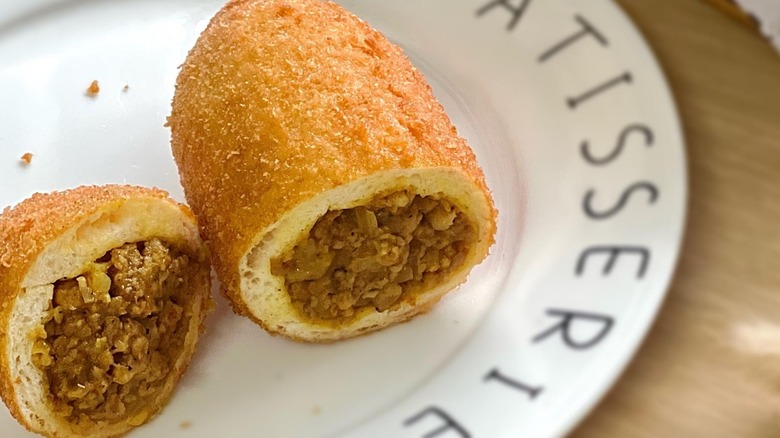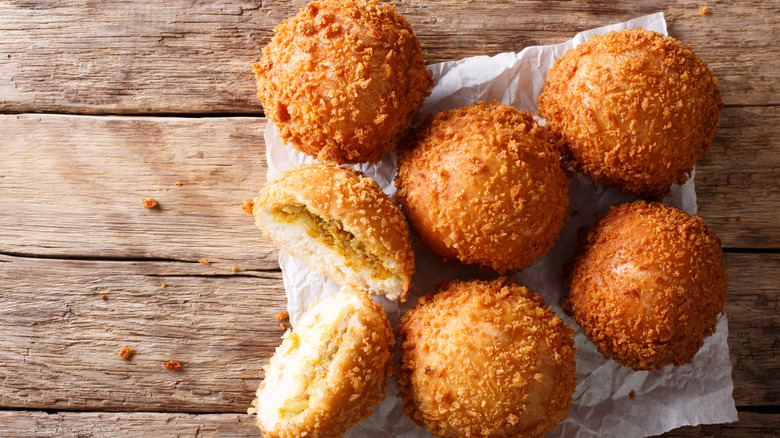Curry Bread Is One Of The Most Iconic Pastries In Japan
You spot a golden-brown, football-shaped bread coated in crispy panko in a Japanese bakery. Intrigued, you buy it and take a bite. The crispy exterior gives way to soft, buttery bread and a rich, savory filling of Japanese curry and vegetables. Sometimes, there's minced meat like pork or chicken inside. What you've just savored is a Japanese curry bread, or kare pan (カレーパン), one of the most iconic pastries in Japan. The deep, delicious curry flavors and the comforting textures of deep-fried milk bread come together in one beautiful package.
Curry bread purportedly carved its niche in Japan in 1927, when it was invented by the owner of a Tokyo bakery named Cattlea, according to Tokyo Cheapo. What inspired this dish was the Western cooking technique of deep-frying, which was rapidly gaining popularity across Asia at that time. Japanese curry has been a long-time staple in Japan, so what better way to marry a trend and a staple in one easy-to-sell package? Today, Cattlea still operates in the Koto City ward of Tokyo, and fans of curry bread will tell you that the ganso (original one) dating back to the Shōwa era remains the best. You can find curry bread in konbinis (convenience stores) all across Japan, and they are sold in Asian bakeries across Asia and Asian diasporas as well.
Curry bread looks like a croquette at first glance but it's so much more than that
At first glance, curry bread looks like a croquette, and you might mistake it for a humble pastry when, in fact, it has a complex taste profile and requires many steps to make. Japanese curry is mild, creamy, and slightly sweet, more reminiscent of gravy than spicy Indian or Thai curries. The bread is a milk bread and, thanks to the deep frying, you get a crunchy exterior and soft interior, with each bite feeling multisensory.
Making curry bread at home is not the most straightforward of tasks. It involves several meticulous steps: preparing the bread dough, cooking the curry filling, rolling the assembled bread in panko, and then deep-frying the pastry. When you overstuff the bread, the seams can pop while deep frying. Add too little filling, and you get too much bread with each bite.
While making curry bread at home might be challenging, the effort pays off in a deliciously rewarding way. Of course, we also feel it's best to support a local Japanese or Asian bakery and try their curry bread, especially if travel to Cattlea in Tokyo is out of the question. Once you taste this incredible fusion of flavors and textures, you'll understand why curry bread, or kare pan, has stood the test of time and remains a beloved culinary classic nearly a hundred years after its invention in Tokyo.

